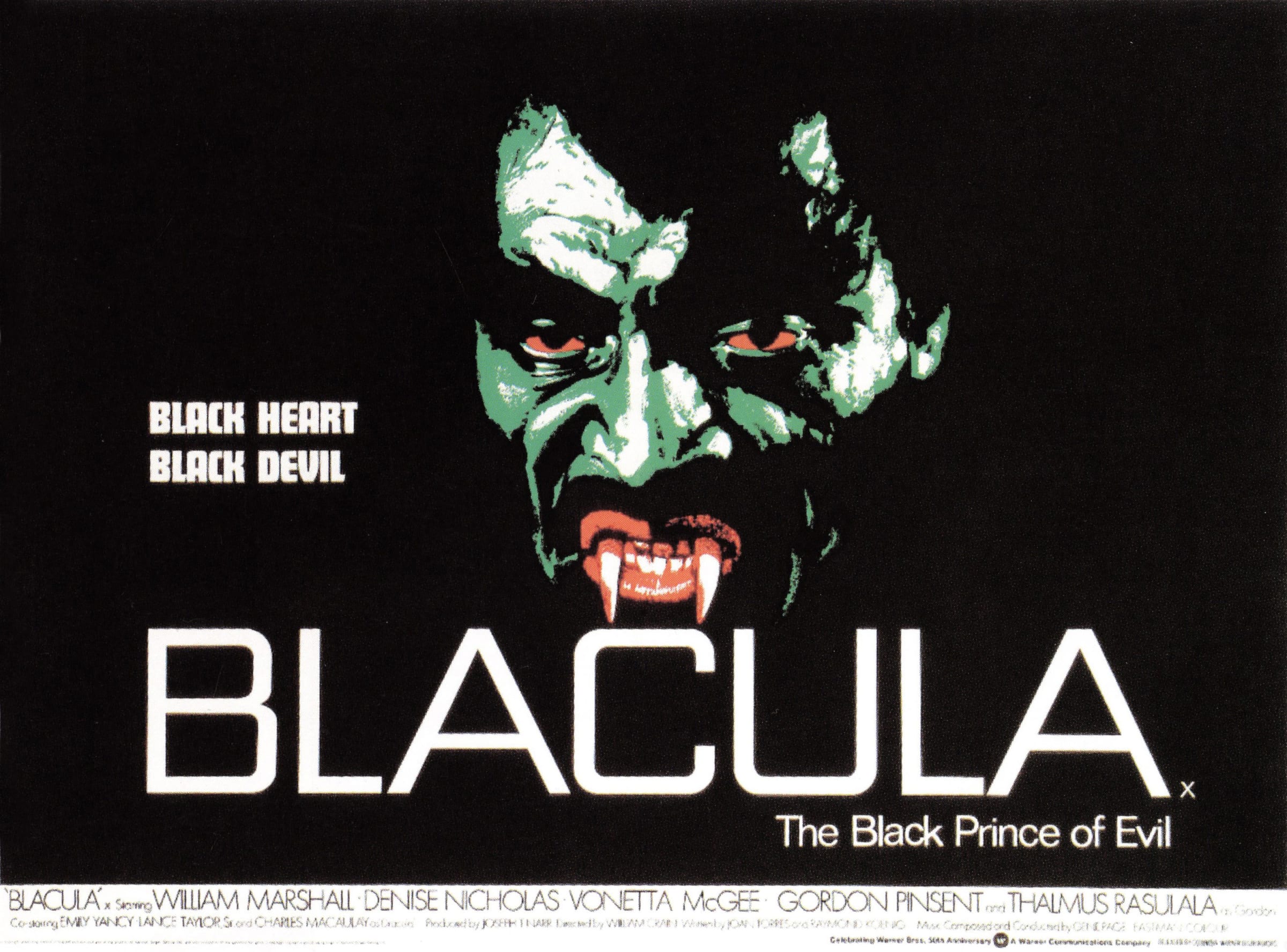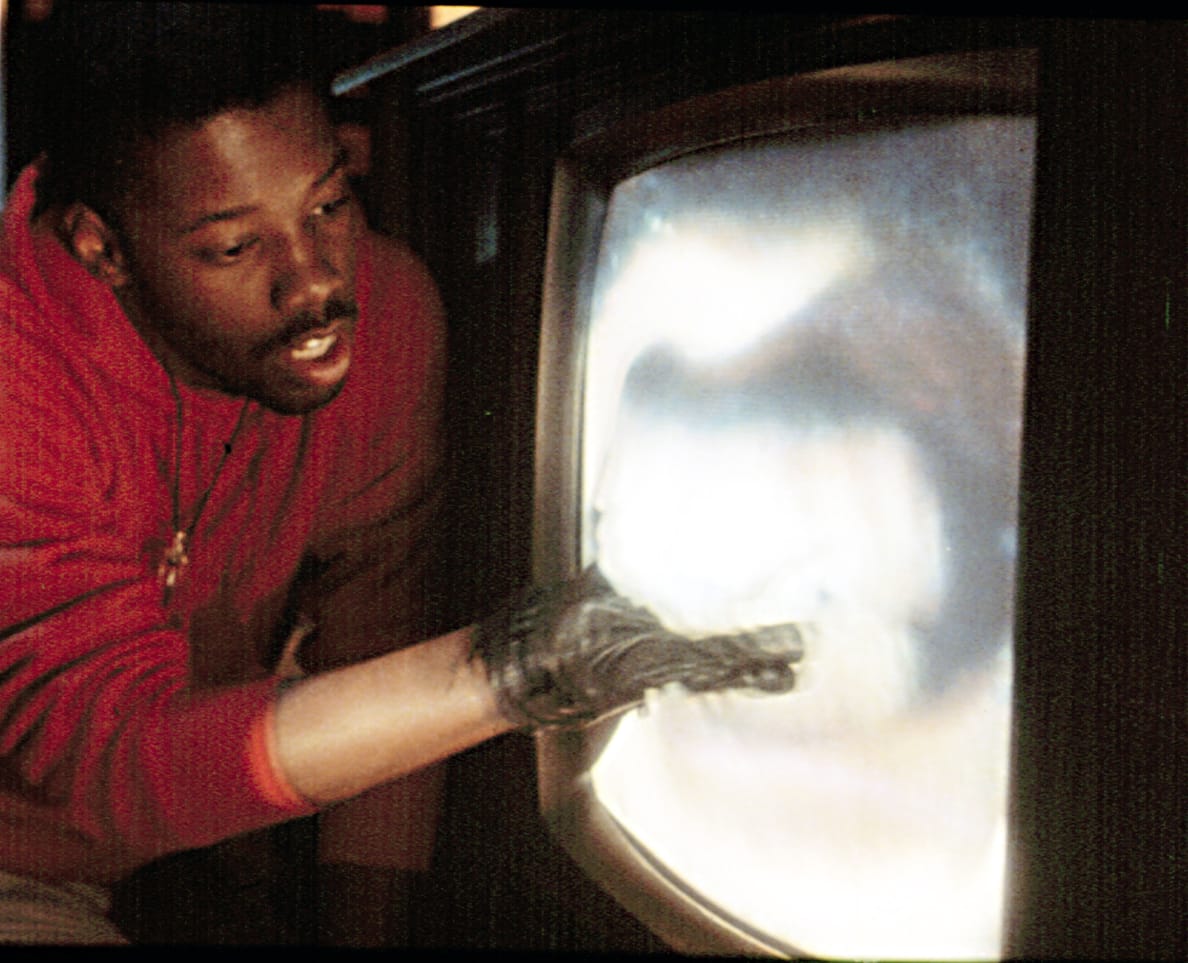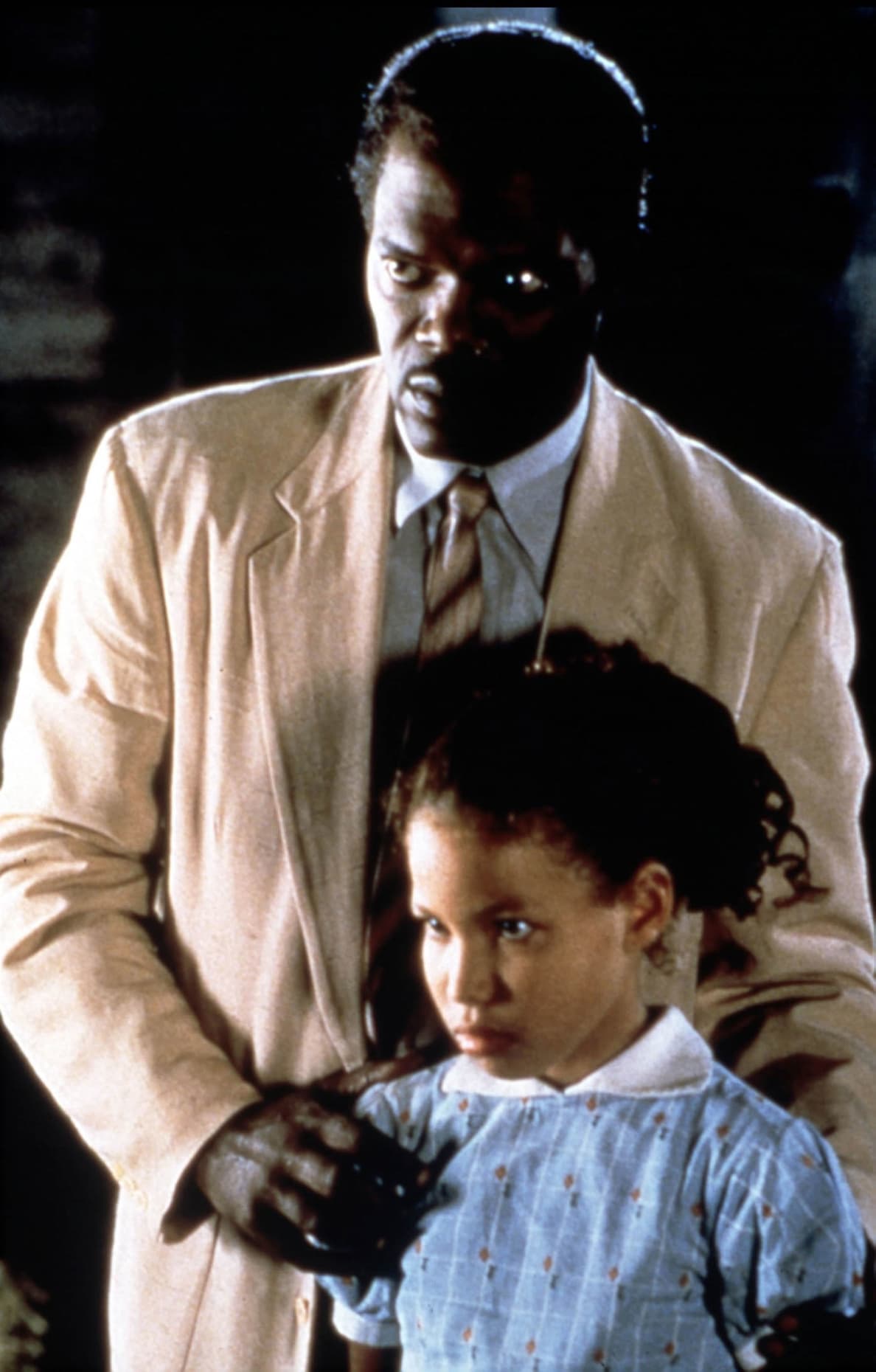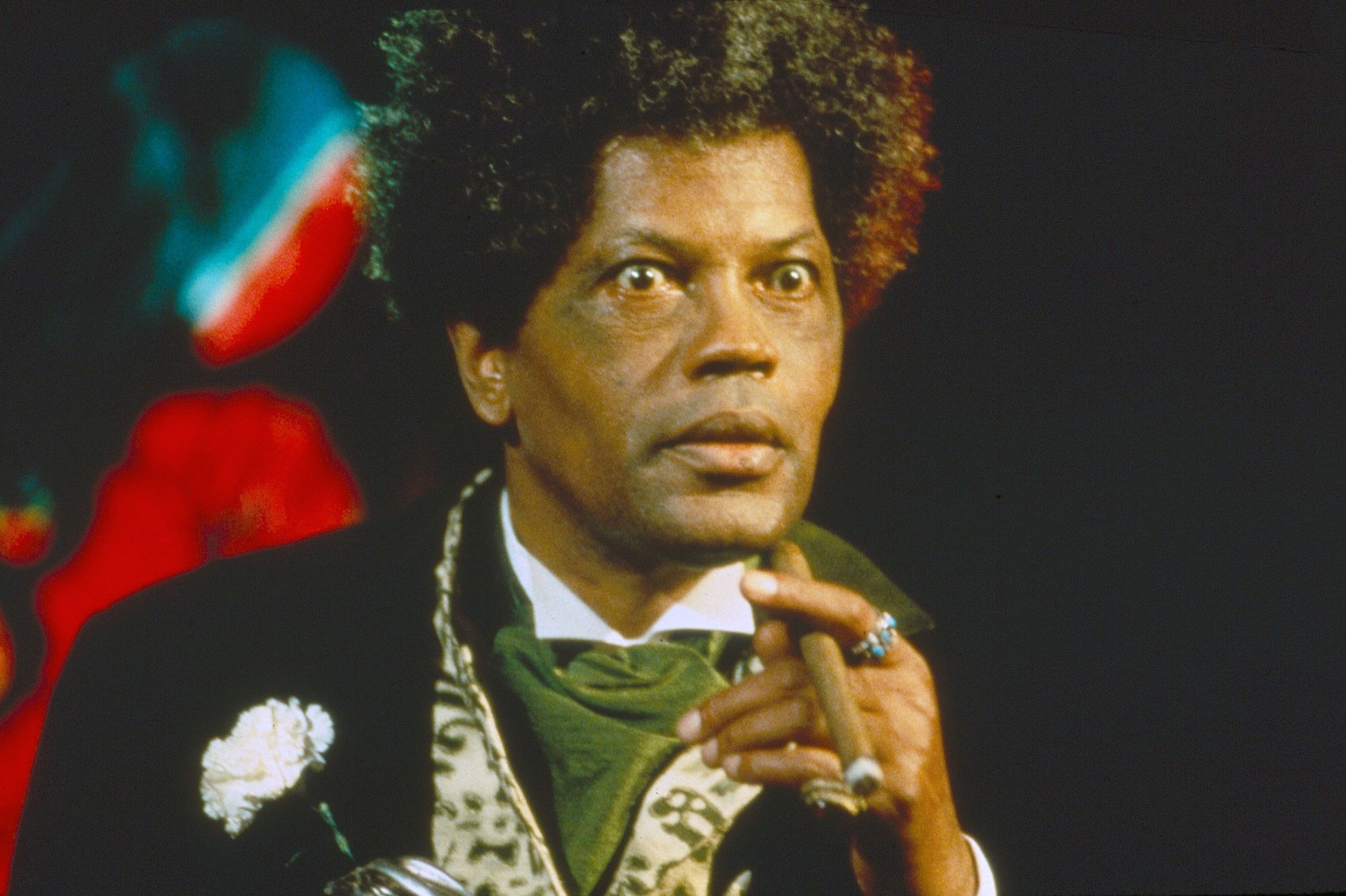William Crain recalls being surprised by the amount of autonomy he enjoyed while working on the beloved Blaxploitation film Blacula—but he still faced plenty of frustrating arguments along the way.
The film’s original title, Count Brown’s in Town, was not an encouraging start. “With that name you can imagine what they had in mind,” Crain told The Daily Beast during a recent interview. “When I read the script, I kind of put it down. My parents said to me, ‘If you have the chance to do this movie, you need to go do it—do the best you can.’”
Blacula made bank for American International Pictures—in part, it seems, because co-founder James. H. Nicholson was amenable to Crain and star William Marshall’s edits. “I was allowed a couple days of rehearsals,” the director recalled, “and we worked on it, worked on it, rewrote it, and came up with the piece that you’ve seen.”
As open as Nicholson might have been to Crain’s creative input, however, there were some stand-offs. The film’s most iconic shot, of Ketty Lester’s Juanita waking up as a vampire and running in haunting slow-motion down a hallway to make her first kill, almost fell victim to the same stubbornness.
Crain needed a high-speed camera to produce the slow-motion effect that makes the running shot so haunting—but the studio wouldn’t budge. (“Man, you would have thought I was trying to get the president out of the White House,” Crain said with a laugh.) Instead, the studio insisted that he shoot with the equipment he had. The director and his crew tested the limits of their equipment, running the film through the camera as fast as possible only for it to come out in shreds. Then, at the very last minute, a crew showed up with the proper equipment.
“I don’t know how or when they decided to do this,” Crain said. “I heard there were all sorts of conversations going on—‘Give him this, give him that,’ ‘Don’t give him this, don’t give him that.’” Evidently, the powers that be at AIP had found the dailies encouraging.
As anyone who’s watched an awards show recently can tell you, Hollywood is still not the most equitable place when it comes to creative opportunities and resources—but Crain and other scholars who spoke with The Daily Beast agreed that conditions have improved.
Jordan Peele’s Get Out was something of a watershed moment. The film’s success both at the box office and the Oscars, where it won Best Original Screenplay on top of three additional nominations, sparked a broader conversation around the history of Black horror that has since created more resources and opportunities for other directors within the genre. As this explosion continues, however, it’s worth remembering the rich history that preceded it—a robust canon of horror movies from Black directors who, like Crain, built a lasting cultural tradition with its own visual and thematic language, despite constant obstacles.
In 2011, Robin Means Coleman outlined the history of Black horror in a fascinating book titled Horror Noire: Blacks in American Horror Films from the 1890s to Present. The horror streaming service Shudder released a documentary adaptation of the book in 2019, and on Thursday the platform released a follow-up anthology with short films from a number of Black directors. Among them is Tananarive Due, a UCLA lecturer and horror author who appeared in and executive produced the 2019 doc.
Due teaches a class called “The Sunken Place: Racism, Survival, and the Black Horror Aesthetic.” Speaking with The Daily Beast, the lecturer outlined that aesthetic, as well as the tropes that permeate the genre. Among them: addressing the invisibility and erasure of Black actors in so-called “mainstream” film.
Black horror directors, Due observed, tend to replace sacrificial Black characters “who were just sidelined or monster bait” with characters who “actually have agency in the film and maybe even survive.”
“Isn’t that revolutionary?”

There’s a difference, Means Coleman points out both in Horror Noire and during our interview, between horror films that spring from white creators’ imaginations and happen to feature Black actors—“Blacks in horror”—and those actually created by Black directors—“Black horror.” This latter category, Means Coleman notes, can have universal appeal just like the former. At the same time, however, “You’ll see sort of a hailing of Black culture without explanation—it’s an insider conversation. Others may be invited in, but the conversation first is with us.”
Since its beginnings with directors like Oscar Micheaux and Spencer Williams (also of Amos ’n’ Andy fame), Black horror has been forced to overcome behind-the-scenes hurdles like those Crain met during Blacula.
Early on in his career, Crain recalled, “I knocked on the doors and went to Universal, Disney, took part in the Directors Guild negotiations… They weren’t ready for me, I guess. Some people almost closed the door.” When he worked in television, on series including The Mod Squad and Starsky & Hutch, Crain said his contemporaries tended to have multiple jobs lined up at once while it would usually take a season or more for someone to hire him for another project.
“Some of the producers, I would meet with them and they would say, ‘We’ll look into it,’ and I would never hear from them again,” Crain said. “But there were a couple producers who would say, ‘We just can’t do this right now.’” (“This” being “hire a Black director.”)
Both Crain and Tales from the Hood director Rusty Cundieff said that Get Out’s sharp writing and commercial success had created more opportunities for Black creatives. The success of Nia DaCosta’s Candyman—which made her the first Black woman to direct a No. 1 box office hit—was just one more advancement, Means Coleman said. “We’ve been talking about where are women in this space? What’s the possibility there? Will they be able to enter and get recognized? And she has done that.”

Jordan Peele directing Daniel Kaluuya in Get Out (2017)
Universal Pictures
When asked how he thinks the landscape has changed for Black horror directors, Cundieff noted that there’s a lot more opportunity to be found now than a decade or two ago. Still, he said, “Any time you’re taking money from someone, you’re going to get their notes.” He’s had multiple creative notes from studios about ideas that might have run afoul of Donald Trump and his supporters. (“I literally shot a whole segment and they made me reshoot it because they thought it was too much like Trump,” he said. “And obviously this was a villain.”)
While the Black horror movie canon continues to expand and studios remain as “cautious” as ever, Crain might soon return with a new film of his own—his first feature film since 1976. A collaboration with a graduate of one of his theater classes who also happened to be an extra on Blacula, Crain said the film would take place in Haiti and find its inspiration in folklore. The story involves a voodoo priestess who contacts the underworld and summons an evil creature who “brings around evening the score.”
“So it’s sort of a Charles Bronson, I guess,” Crain said with a laugh. “We’ve got 110 pages and now we’re polishing it up and we’ve got the script but the ink is still damp.”
The Black horror canon dates back to the silent era, with Oscar Micheaux’s horror-inflected race film The Dungeon. Spencer Williams released Son of Ingagi, a monster movie with an entirely Black cast, in 1940. Even among these early entries, the thematic patterns that would later become endemic to Black horror had begun to emerge.
“Black history is Black horror,” Due said. “I don’t mean the history of triumph over obstacles and Jim Crow and slavery. I mean specifically the violence—whether it’s the physical violence of lynch mobs, police brutality, or jealous neighbors who might burn a whole town down, or systemic violence that is white supremacy.”
All of these things, Due said, are part of “an ongoing horror story, and the genre of horror is so well-suited to hold a mirror up to society and say, ‘Hey, do you know that this is going on?’”
“Black history is Black horror.”
Due’s mother, civil rights activist Patricia Stephens Due, seemed to use horror to process her own traumas—from being jailed, tear gassed, and arrested at protests in the 1960s and, later, “watching all of those gains, in her view, getting washed away.” Due noted that her mother had grown up in a time when education was still seen as a golden ticket to acceptance in white society—stick it out long enough and behave and dress a certain way, and inclusion must eventually follow. It was also a protective instinct, Due guesses—a logical response to the paralyzing fear of what might happen to one’s children, should they step out of line.
This terror, Due notes, has been a visible trope in Black film and, by extension, Black horror, since the beginning. Micheaux’s and Williams’ films often took the form of morality plays—a tradition one can trace through the decades to more modern films like 1990’s Def by Temptation.
Given the historical traumas that underpin them, Due said, “Is it any wonder that with filmmakers like Oscar Micheaux or even a movie like Def by Temptation... that this idea of the morality story, the morality play, is so persistent? ‘Behave this way; don’t behave that way. If you step out of line, evil can befall you.’”
In films like Williams’ Son of Ingagi, which featured Black doctors, lawyers, and police officers, Due said, “You could see the deliberate attempt to show to Black people themselves—and also to whoever else might see the movie—that we have many, many faces that are different from the ones that had been in films up to that point.”

Kadeem Hardison in Def by Temptation (1990)
©Troma Films/Courtesy Everett Collection
Because of the ongoing mischaracterization and erasure of Black people in film, Due added, “When Black directors get the opportunity to tell stories, they’re very often the stories that they feel are important in terms of how we view ourselves and how we want to be viewed by the outside world.”
Consider, for instance, Eve’s Bayou. Kasi Lemmons’ Southern gothic tale might seem to fit more neatly as “drama” than “horror,” but its cinematography and bleak thematic work fit right in. That film, Due notes, features zero white characters and instead focuses on a young girl’s conviction that she is a monster due to a horrific family trauma. (Samuel L. Jackson starred in this film as well.)
“This girl is carrying this guilt from her father’s behavior when she was a child,” Due said. “I think that’s a really good example, too, of a film that is really just about an artist trying to express their humanity. And that’s the bottom line, I think, with all Black art but also with Black horror.”
The fear of moral corruption, particularly by proximity to white people and institutions, is a recurring theme as well. In Crain’s Dr. Black, Mr. Hyde, a patient of central character Dr. Pride must confront the idea that he’s sold his soul to white America for his success; early on in the film, a client whom he attempts to lecture for being a sex worker chides, “You dress white, you think white… You probably even drive a white car!” After conducting experiments on himself, Dr. Pride turns into a pale-skinned monster.

Samuel L. Jackson and Jurnee Smollett in Eve's Bayou (1997)
Mary Evans/Ronald Grant/Everett
And let’s not forget, Prince Mamuwalde only became a vampire at the start of Blacula because he made the mistake of approaching a white man (well, vampire—Dracula) to suppress the slave trade.
Crain recalls working alongside William Marshall—the Shakespearean actor who brought Blacula to life, whom he’d already met in various workshops—to transform Count Brown’s in Town into something they could be proud of. “I told him, ‘Don’t pay attention to what you’re reading; I want to change almost everything and make it a classic if I can do it,’” Crain said. “And he said, ‘Let’s go for it.’ We agreed on almost everything but we had to get it on paper.”
In addition to the morality tale component, Christianity itself also seems to play a major role in Black horror—from titles like Def by Temptation to Bill Gunn’s stunning Ganja & Hess, which ends with the vampire Hess seeking salvation (in this case, death) by kneeling before a cross inside a church. Ganja, meanwhile, decides to continue the lifestyle she and Hess had, for a time, embraced together after the deaths of their spouses; she chooses to live on as a vampire as her own sire rises from the water to follow her.
When Black horror directors invoke religion and Christianity, Tales from the Hood director Rusty Cundieff said, they’re also tapping into “what a lot of African Americans are most connected to, in terms of how they deal with the true horrors in their lives.”
“I think it kind of works on a couple of different levels,” Cundieff said. “But the interesting thing to me in terms of religion, when you’re dealing with horror... It’s like a ghost. It’s something we can’t see, something you can’t prove, but it’s a way to deal with a circumstance. Horror is also a way to look at your circumstances.”
In the same way that religion can serve as a salve for the psyche and spirit, Cundieff said, horror is a corrective in its own way.

Clarence Williams III in Tales From The Hood (1995)
Toni Scott/Savoy Pictures/Everett Collection
Cundieff’s Tales from the Hood, an anthology of social and political horror shorts, exemplifies another discerning trope of Black horror: As Means Coleman notes, several memorable entries—including Get Out, Candyman (2021), Jamaa Fanaka’s Soul Vengeance, and Tales from the Hood—speak out against police corruption and violence.
“That is definitely a kind of Black horror,” Due said. “Where racism itself is the monster.”
While the morality tale remains influential within the genre, Black horror often also speaks out against white people’s projections of moral depravity onto Black people—and the corrosive agents that can infiltrate Black communities.
“That is definitely a kind of Black horror. Where racism itself is the monster.”
“Drugs infiltrate communities, guns infiltrate communities, right?” Means Coleman said. “[In] communities that are under-resourced… those are introduced and those are external... They’re criminalized when the criminality is imported. That’s a popular theme or storyline that you will see in Black horror films.”
“But I also will say there’s a third point, which is that Black horror film is incredibly innovative in being hopeful against those narratives,” Means Coleman said. “So it isn’t just victimization—there’s actually solutions.”
Will any of us ever forget that part of Get Out where Lil Rel Howery runs Allison Williams over with a police car?
Another example: In Tales from the Hood’s “Boys Do Get Bruised,” there is a quiet young boy named Walter and his teacher, Richard Garvey—played by Cundieff—notices the bruises on his body and decides to get involved. Walter’s mother’s boyfriend, Carl, is abusing both of them, which has led Walter to imagine him as a monster. When Richard finds out, he attempts to fight Carl off—but it’s Walter who overpowers his abuser by discovering that when he crumples a drawing of the “monster,” Carl’s body suffers along with it.
When asked why he’d chosen, of all characters, to play Richard, Cundieff admitted his memory was fuzzy. But he did remember one thing: “I had a kind of connection to that one, because I just remembered seeing a kid who was mistreated when I was younger,” he said. “It all kind of stuck in my mind, so I had a kind of a connection to that tale as well.”
As the director had said earlier: Sometimes horror can be a corrective.
"movie" - Google News
October 31, 2021 at 10:21AM
https://ift.tt/2ZERLT4
The Black Horror-Movie Canon Is So Much More Than 'Get Out' - The Daily Beast
"movie" - Google News
https://ift.tt/35pMQUg
https://ift.tt/3fb7bBl
Bagikan Berita Ini














0 Response to "The Black Horror-Movie Canon Is So Much More Than 'Get Out' - The Daily Beast"
Post a Comment